You're using an outdated browser. Please upgrade to a modern browser for the best experience.

Submitted Successfully!
Thank you for your contribution! You can also upload a video entry or images related to this topic.
For video creation, please contact our Academic Video Service.
| Version | Summary | Created by | Modification | Content Size | Created at | Operation |
|---|---|---|---|---|---|---|
| 1 | Su-Jin Jung | -- | 4634 | 2022-12-01 01:45:23 | | | |
| 2 | Rita Xu | Meta information modification | 4634 | 2022-12-01 02:45:48 | | |
Video Upload Options
We provide professional Academic Video Service to translate complex research into visually appealing presentations. Would you like to try it?
Cite
If you have any further questions, please contact Encyclopedia Editorial Office.
Jung, S.; Chae, S.; Shin, D. Traditional Fermented Foods in Korea. Encyclopedia. Available online: https://encyclopedia.pub/entry/37409 (accessed on 27 December 2025).
Jung S, Chae S, Shin D. Traditional Fermented Foods in Korea. Encyclopedia. Available at: https://encyclopedia.pub/entry/37409. Accessed December 27, 2025.
Jung, Su-Jin, Soo-Wan Chae, Dong-Hwa Shin. "Traditional Fermented Foods in Korea" Encyclopedia, https://encyclopedia.pub/entry/37409 (accessed December 27, 2025).
Jung, S., Chae, S., & Shin, D. (2022, December 01). Traditional Fermented Foods in Korea. In Encyclopedia. https://encyclopedia.pub/entry/37409
Jung, Su-Jin, et al. "Traditional Fermented Foods in Korea." Encyclopedia. Web. 01 December, 2022.
Copy Citation
Fermented foods are loved and enjoyed worldwide and are part of a tradition in several regions of the world. Koreans have traditionally had a healthy diet since people in this region have followed a fermented-foods diet for at least 5000 years. Fermented-product footprints are evolving beyond boundaries and taking the lead in the world of food. Fermented foods, such as jang (fermented soybean products), kimchi (fermented vegetables), jeotgal (fermented fish), and vinegar (liquor with grain and fruit fermentation), are prominent fermented foods in the Korean culture.
fermented food
kimchi
jang
jeotgal
vinegar
1. Introduction
Fermentation was first scientifically defined 500 years ago [1][2], yet humans have used fermented foods for ages. In the early days, humans used natural products and relied on natural phenomena for fermentation. For instance, fermentation might have naturally occurred when microorganisms in the air acted on fallen starchy grains or fruits [3]. There are over 5000 fermented foods reported worldwide, with an estimated daily consumption of 50–400 g of fermented foods [4]. Fermented foods are produced using biochemical functions where microbes decompose or synthesize organic substances that positively affect the human body by producing new substances, such as organic acids, vitamins, fatty acids, and fragrances. In addition, the microorganisms involved in fermentation enter the human body and act as a probiotic, enhancing the value of fermented food products [5]. Hence, fermentation applicability will be broadened and extensively included in biotechnology and sectors associated with microbial culture in the near future [6]. The history of fermentation is the same as the history of microorganisms involved in fermentation. Between 3.3 and 3.5 billion years ago, microorganisms first appeared as life forms according to different proper survival conditions and began to use natural objects around them to maintain their lives [7]. Starting with these first microorganisms, a process in which numerous life forms appeared and disappeared was created.
However, it is necessary to understand how the fermentation process has evolved. From 10,000 B.C. until before the Aryan Middle Ages, fermentation techniques were employed to manage over-produced food items. Over the years, people learned multiple fermentation methods and experimented with other unique raw materials, such as meat and marine products. In this manner, acquired knowledge and techniques were passed down to future generations to form a unique fermented food. The general fermentation process is presented in Figure 1 [8].
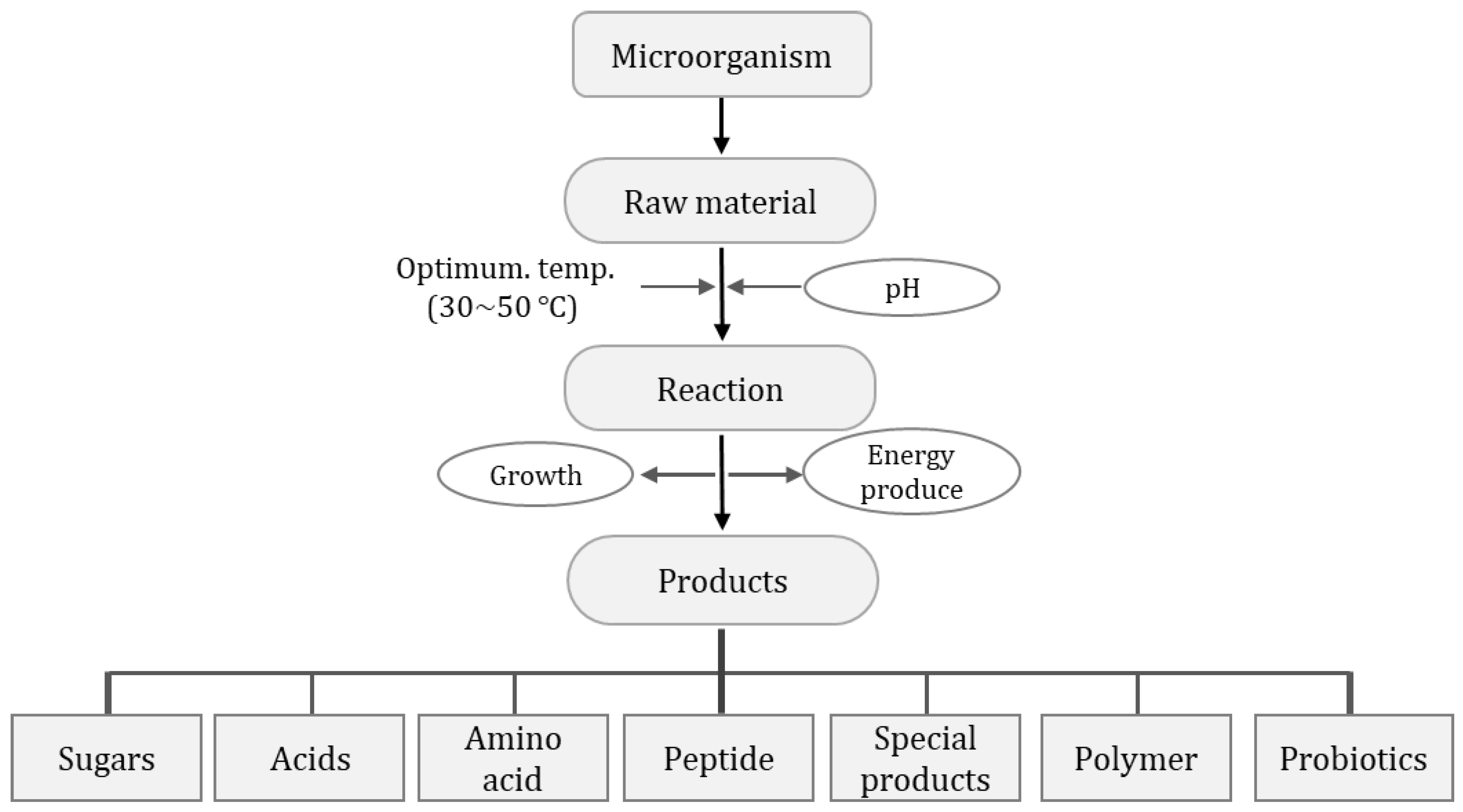
Figure 1. Enzymes released by microorganisms and the enzymes of the raw material.
2. Traditional Fermented Foods in Korea
The Korean diet relies on rice, specifically Hansik (Korean traditional diets), which forms the main meal. Hansik is composed of rice, soup, kimchi, and various banchan (side dishes) with one serving called bapsang. The principal aspects of Hansik include a proportionally high composition of fresh or cooked vegetables (namul), a moderate to high consumption of fish and legumes, and a low consumption of red meat. Banchan are different vegetable-based side dishes served with cooked rice in Korean cuisine. Various fermented foods are well suited to enhance the taste and are prepared using vegetables. However, it tastes bland and has a mild flavor and needs something salty to enhance the taste. Moreover, most available vegetables are also bland in taste and have a short lifespan. Thus, to enhance the taste and lifespan, salting was adopted [9]. With the introduction of salting into Korean cuisine, salted and fermented foods dominated the Korean diet as a side dish and gained popularity. Moreover, the salting process prevented the growth of putrefactive bacteria, facilitating an extended shelf life. With time, the salting process dominated food preparation and led to the development of several fermented foods. Since then, the Korean foods that best reflect the traditional fermentation process include kimchi, jang, jeotgal, and vinegar. These food products have dominated Korean food culture over the centuries.
2.1. Representative Traditional Korean Fermented Foods
2.1.1. Kimchi
Kimchi is one of Korea’s signatory fermented foods prepared using various vegetables, including cabbage, fruits, and other ingredients. There are different types of kimchi depending on the raw materials and salting method. The preparation of good kimchi depends on the raw materials used, as these raw materials contain microorganisms needed for the fermentation process [10]. Additionally, the use of red peppers adds a unique taste to the kimchi, and its usage is unique to Korea [11].
2.1.2. History of Kimchi
Kimchi is one of the side dishes widely consumed in East Asia. It is estimated that kimchi was established as a food since the introduction of the salting method to the Korean diet. Early documents on kimchi can be retrieved from Samkuksaki, a book published in 1145 A.D. [12]. However, predicting the exact timing of kimchi’s introduction is challenging, but the mixture of red peppers in kimchi can be linked to the traditional history of red peppers. Some historians claim that red peppers were imported before the Japanese Invasion of Korea in 1592, while others claim that red peppers have long been grown in Korea [13]. Despite these discrepancies, the history of kimchi is closely linked to the introduction of red peppers. Though kimchi is an outcome of a vegetable fermentation process in salt, it has undergone several transformations in its preparation [9]. Historically, kimchi was prepared with vegetables, such as cabbage, sweet potato, eggplant, dropwort, radish, leaf mustard, turnip, and lettuce, until the early Joseon Dynasty. In the 1500s, Suwoonjabbang, a book detailing cooking procedures, mentioned the use of these ingredients in making kimchi [14]. Moreover, Suwoonjabbang mentions the diversification of kimchi using red peppers, garlic, and jeotgal [15].
According to the Samguksagi (Korean history book), fermented foods, such as ganjang, doenjang, and sikhe were included in a bride’s gift items when the third year of King Sinmun (683) greeted his wife, and it is believed to be a generic term for jeotgal and salted foods based on the record of jeotgal and salted vegetables. Additionally, a remaining relic named Seokong, in the 19th year of the 33rd King Seongdeok (720) at Beopjusa Temple of the Silla Dynasty, was assumed to be a jar for salting kimchi considering its shape. At this time, therefore, vegetable fermentation and fermented foods using fish as raw ingredients were already common, and they would have penetrated deeply into the Korean diet [16].
2.1.3. Types of Kimchi
All vegetables can be used as raw materials for producing kimchi. However, taste and flavor depend on how vegetables are pretreated, salted, and other ingredients, including spices, are added together. The major ingredient defines the type of kimchi that is produced. For instance, cabbage is the main ingredient in Chonggak kimchi, which has pickled ponytail radish, and Kkakdugi has cubed-cut radish. Other supplementary ingredients include red pepper powder, garlic, green onions, ginger, mustard, onions, and cinnamon, which add to the taste. Apart from these, other ingredients, such as dropwort, carrots, mustard leaf, crown daisy, radish leaves, and sesame leaves, are used depending on the taste of the region and family. Occasionally, sticky rice and malt extract are added to kimchi to give it a sweet taste. However, the main ingredient determines the type of kimchi produced, and it is used as per the regional taste [10].
2.1.4. Preparation of Kimchi
Kimchi preparation is simple, but requires quality raw materials to produce the best kimchi. Raw materials (cabbage, radish, and cucumber) are cut into appropriate sizes, and about 10% of salt is added to the raw material, either directly or indirectly. The direct addition of salt to the raw material is called dry salting, while raw materials being dipped in saltwater is a wet method. After brining, excess water is drained and the raw materials are remixed. The mixed raw materials are stored in containers for short-term or long-term fermentation periods. Seasoning for kimchi is prepared in advance by mixing spices, salted fish, red pepper powder, garlic, ginger, and seasoned vegetables. If seasoning is used, the amount of salt added is adjusted accordingly. Generally, a salt concentration of 2–3% is considered adequate. The combination of seasoning has a great influence on the taste of kimchi, but the moisture content in the raw material significantly influences the final product. Kimchi is a popular food product all over the world. Hence, low-temperature fermentation is preferred for commercial production. The general process for preparing cabbage kimchi is presented in Figure 2. Kimchi preparation is simple but different from German sauerkraut and Chinese Po Chai, which do not use special seasoning.

Figure 2. Simple manufacturing process of Korean cabbage kimchi.
2.2. Jang (Fermented Soybean Products)
Soybean is the primary raw material used to prepare jang, along with grains, red peppers, and salt. Historically, Dong Yi, an ethnic group from South Manchuria and mount Baekdu in the Korean peninsula, are thought to have been the first to use soybeans for food preparation [17]. However, amino acids or peptides are formed when the protein is decomposed by enzymes or other methods, which are water-soluble substances and impart distinct savory properties. Jang usage in Korea is described in Samguksagi (A.D. 683), but Chinese literature and relics suggest that soybeans were used in Korean cuisine much earlier than in 683 A.D. [18]. Nonetheless, multiple archaeological digs have proven that soybeans were used in the northern Korean Peninsula (Gyeonggi) in the late 2000s B.C. (Bronze Age) (Lee, S.W., 1994). These documents show that soybean farming began in the Korean peninsula during the Bronze Age, and some relics, such as the Baekje tombs, support this theory [9]. At present, there are several types of soy foods available, including ganjang and deonjang.
2.2.1. Production of Meju (a Brick of Fermented Soybeans)
Meju is the basic material for making jang. Traditionally, meju is made by allowing numerous microbes to naturally proliferate at high temperatures, and these microorganisms can decompose the soybean proteins. Thus, the fermentation state of meju is closely related to the quality of the final jang. Figure 3 depicts the meju preparation process [19].

Figure 3. Procedure for the preparation of meju.
The taste and aroma of the meju depend on the degree of fermentation. However, recent developments and an increased understanding of fermentation has eased meju production. Recently, superior beneficial microorganisms have been utilized for inoculation and fermentation in the production of meju. At present, Aspergillus oryzae and Bacillus subtilis are common microbes used for the fermentation process.
2.2.2. Ganjang
In the Korean diet, ganjang is a popular, traditional, seasoned product. It is a household name in Korea and is generally prepared by homemakers to enhance the flavor of foods consumed with ganjang. Figure 4 illustrates the art of preparing ganjang [19].

Figure 4. Schematic representation of ganjang preparation.
Ganjang prepared with a high salt (>20%) amount has a longer shelf life. Freshly prepared ganjang is known as haet ganjang (new soy sauce). Ganjang darkens, and the scent lightens with storage time. In addition, in some regions, modified ganjang is produced using flour and soybeans instead of meju. The preparation process for modified ganjang is presented in Figure 5 [20].
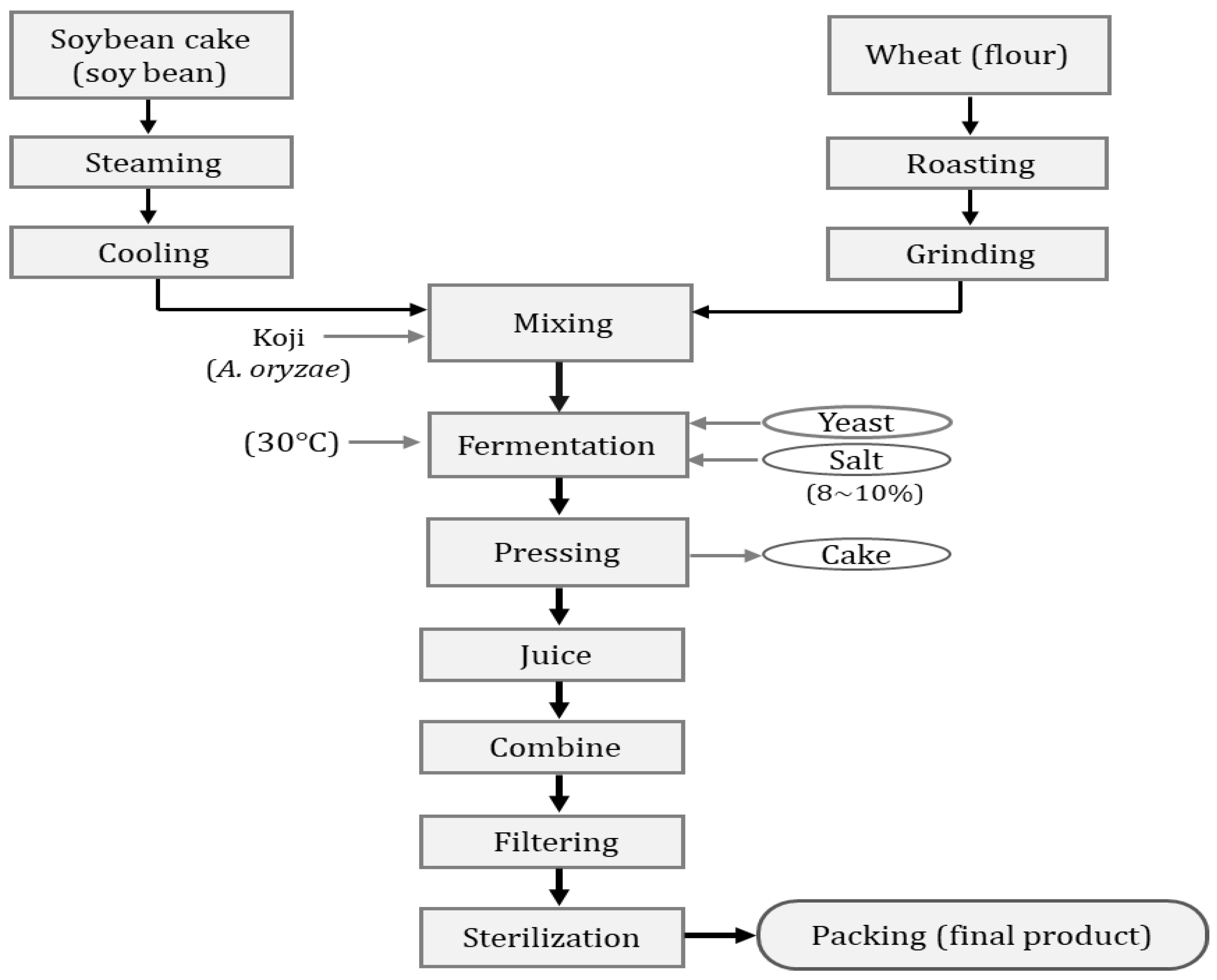
Figure 5. Manufacturing process of modified ganjang.
2.2.3. Doenjang
Doenjang is another food product made from soybean, and is traditionally used in Korea as a basic seasoning. In the market, doenjang is produced in two ways: one is traditional, and the other is a modified method [21]. Traditionally, doenjang is prepared by immersing meju in a brine solution and allowed to ferment for at least 6 months, then separated the remaining meju chunks. The filtrate becomes traditional ganjang. Traditionally, doenjang is prepared by the fermentation of cooked and mashed chunks with meju powder, ganjang, and steamed rice or barley in a clay pot. Specific microbes are inoculated to alter the fermentation process in the modified method. Ganjang is obtained as a byproduct of doenjang. Traditional doenjang has a unique and strong flavor. However, doenjang prepared using a modified method has a mild flavor. Traditional doenjang contains a relatively high salinity level, and efforts are being made to lower salinity without affecting the shelf life. The traditional and modified doenjang production is illustrated in Figure 6 and Figure 7, respectively.
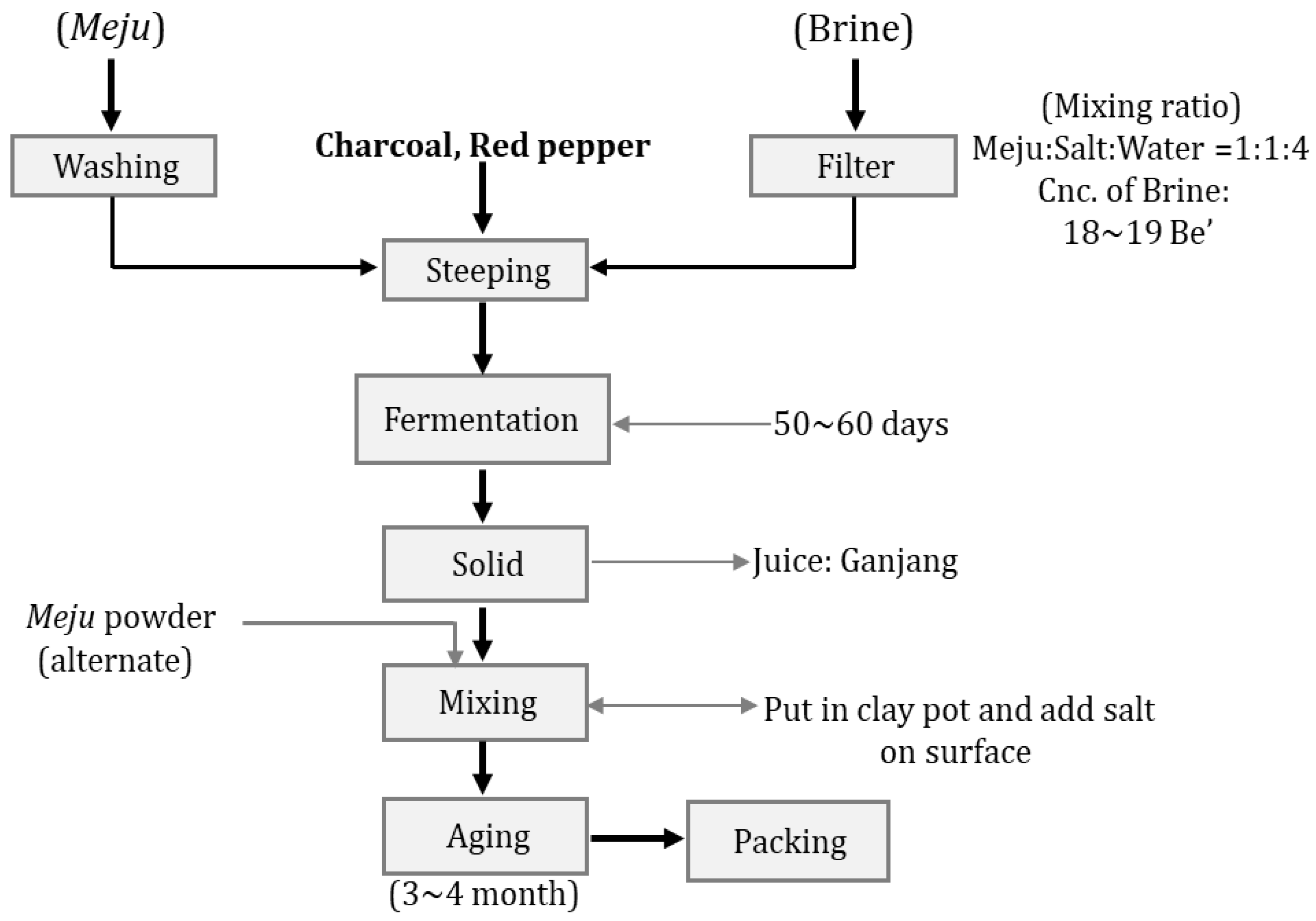
Figure 6. Traditional doenjang preparation.
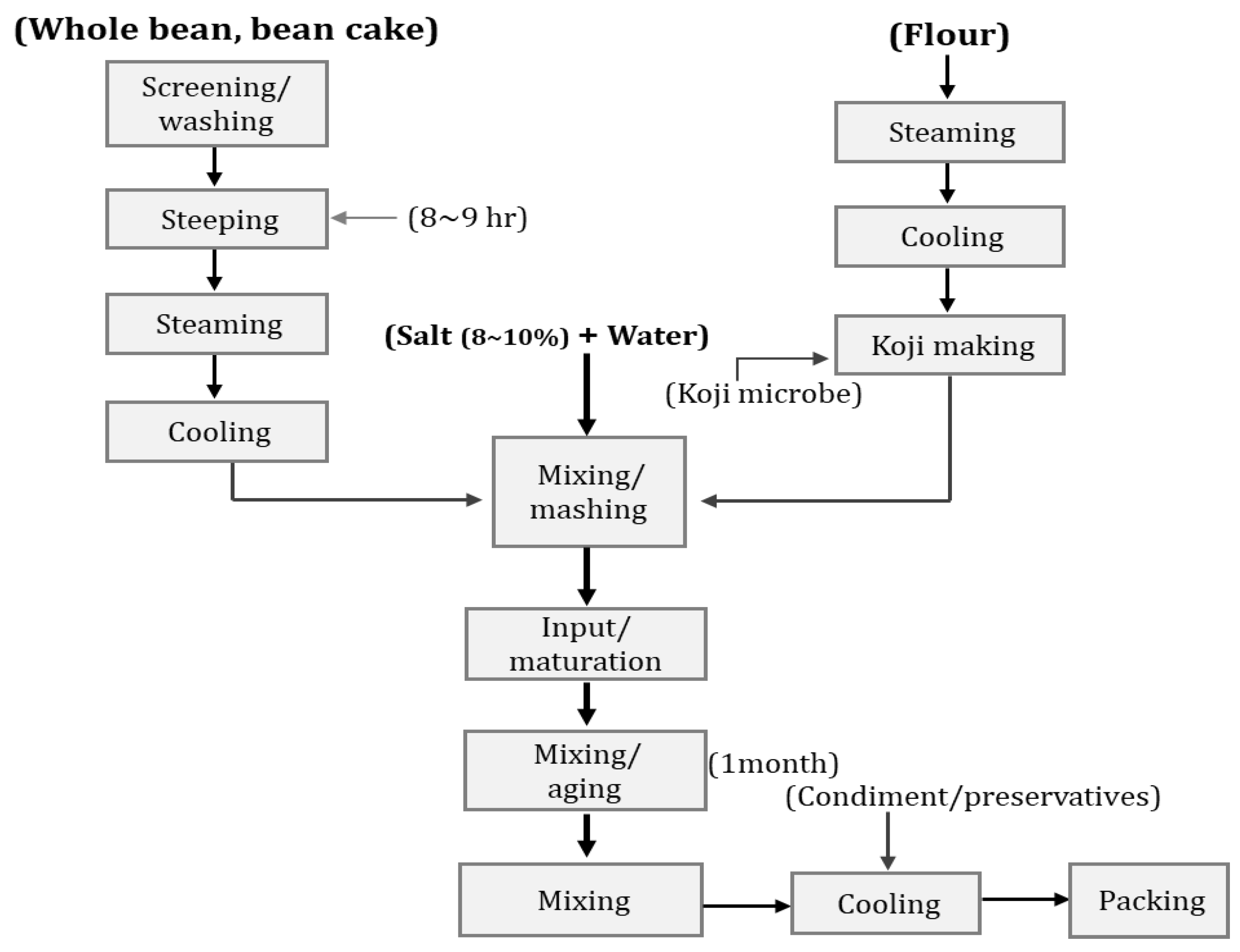
Figure 7. Modified doenjang preparation process.
Doenjang is reported to have antioxidant, anticancer, estrogen activity, and immunomodulatory properties. The presence of isoflavones in doenjang is responsible for these functional properties. Isoflavones exist in the form of hydrolyzed aglycone, which is rapidly digested and absorbed. Additionally, the absorption and bioavailability of aglycone are greater than the isoflavone glycosides [22].
2.2.4. Gochujang
Gochujang is a unique seasoning, and it is not only an item that can store well, but is also a spice-fermented seasoning that is differentiated due to its originality, such as its characteristic spicy taste and aroma. Red pepper and mustard are used as main ingredients worldwide, but several kinds of red peppers are also one of the most widely used spices. In particular, red pepper is differentiated by its refreshing, spicy taste and have recently been in the spotlight as a popular diet food worldwide. Along with kimchi, the perception of gochujang, a traditional Korean spicy food, is expected to change considerably. Figure 8 illustrates the general manufacturing process of traditional gochujang [19].
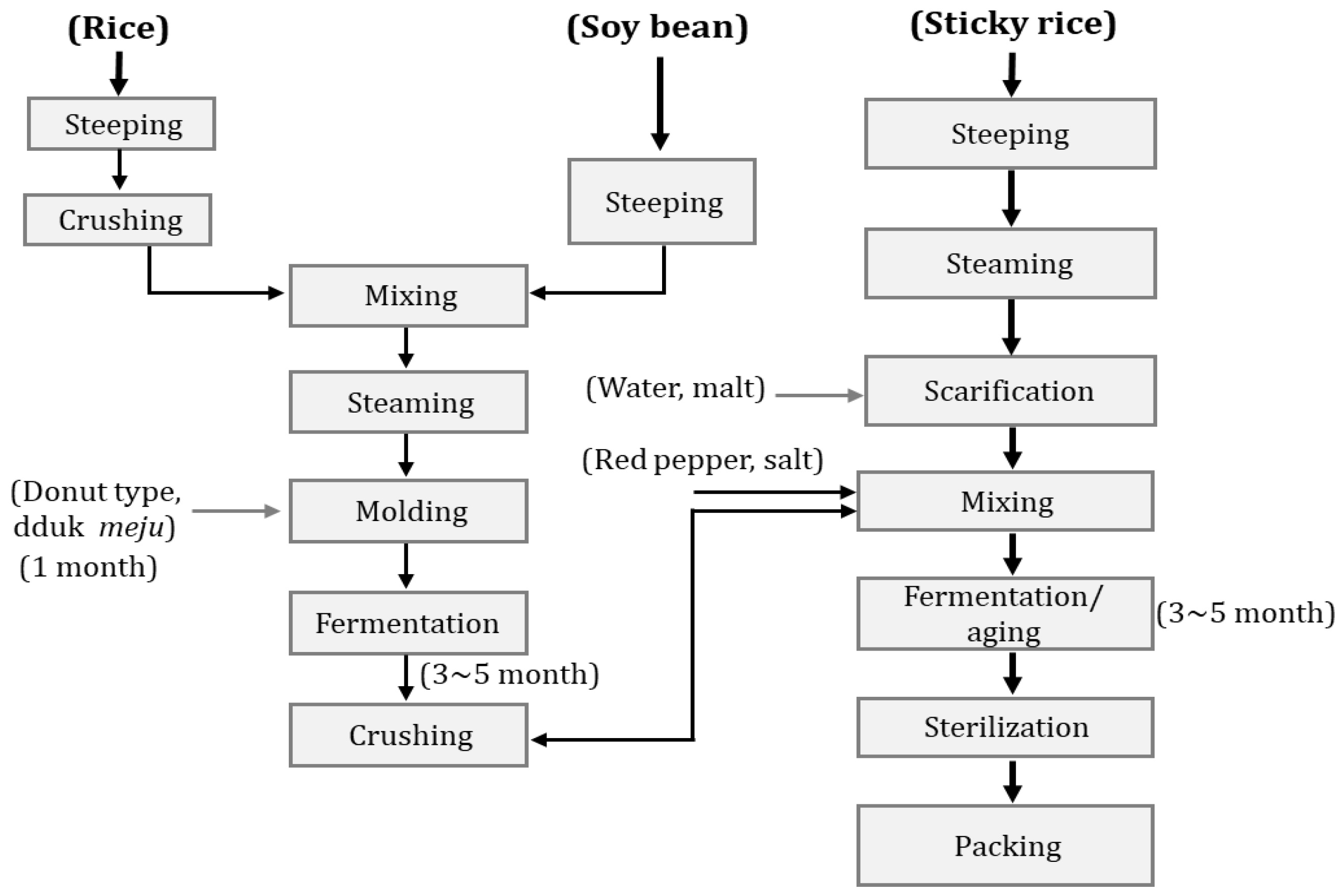
Figure 8. General manufacturing process of traditional gochujang.
The addition of gochujang meju powder prior to fermentation and the use of malt extract to saccharify starch from grains are signatory processes during the preparation of gochujang. Gochujang preparation is characterized by long fermentation in a clay pot with an increased amount of red pepper powder. Sikhye gochujang is a traditional gochujang made with malt extract to break down the starch in rice and other grains, which produces a sweet taste. The modified process of preparing gochujang is presented in Figure 9 [23].
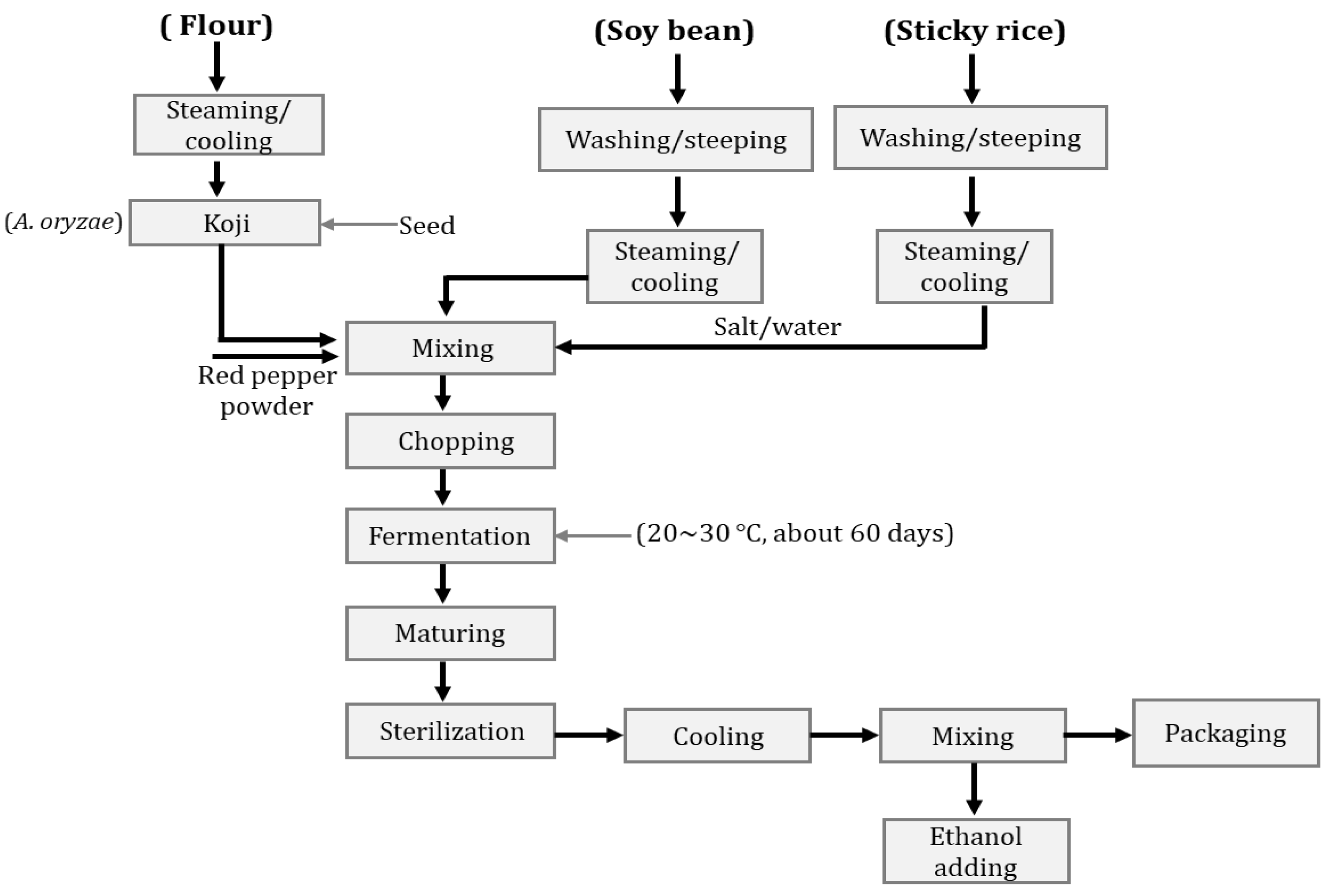
Figure 9. General manufacturing process of modified gochujang.
As shown in Figure 9, the modified process uses flour as a starch source. Starch is decomposed with koji enzymes during a shorter fermentation period. Additionally, the red pepper powder used during the modified gochujang process is less than 10% and added before or after fermentation. Traditional and modified gochujang has a distinct flavor, but modified gochujang is gaining popularity due to its low price.
2.2.5. Cheonggukjang
Cheonggukjang is another fermented product produced from soybeans, and uses the power of bacteria to decompose the soybean protein [15]. Cheonggukjang is fermented at a high temperature (40–43 °C) for a short duration (2~3 days). In most cases, the bacterial composition is utilized to aid the cheonggukjang fermentation process. Bacillus natto is used to prepare Japanese natto, a fermented product from Japan similar to cheonggukjang. However, Bacillus subtilis is a bacteria commonly used to prepare cheonggukjang [24]. Cheonggukjang has a distinct fermentation odor and is consumed in the form of a stew or soup. However, cheonggukjang is unpopular among the young Korean generation owing to its distinct fermentation odor. Nonetheless, if this odor is refined or altered, then cheonggukjang can be developed as a favorite side dish worldwide. Figure 10 represents the manufacturing process for traditional cheonggukjang [19].

Figure 10. General manufacturing process for traditional cheonggukjang.
Moreover, the production of modified cheonggukjang involves the use of selected microbes for fermentation under certain fermentation conditions to regulate and equate the quality of modified cheonggukjang to that of traditional cheonggukjang.
2.2.6. Other Products
Traditionally, meju is the major raw material used along with vegetables and grains to make ssamjang, jeubjang, dambukjang, and makjang. However, the final product varies according to the ingredients used and fermentation conditions [25]. Ssamjang is based on doenjang with seasoning ingredients, such as gochujang. Jeubjang is made of meju, while jeupjang uses wheat flour and is fermented with dried eggplant, cucumber, and radish. It is generally prepared in the Jeolla-do and Gyeongsang-do regions. However, it is being prepared throughout Korea with minor modifications. Dambukjang is another fermented product prepared using meju powder, red pepper powder, and ganjang. Mkajang is processed using warm, glutinous rice with meju powder and fermented overnight. Then, ganjang and water are added and then fermented for about 15 days. Yukjang is another fermented product that uses chicken or meat, along with meju powder. Most of these products are similar, with slight modifications in their preparation process. Additionally, these products are region-specific and popular among adult Koreans.
2.3. Jeotgal
Salted and fermented fish products (jeotgal) have an organizational relationship with traditional Korean fermented foods. Jeotgal has a high salt content similar to other fermented products, and is used to enhance flavor and appetite. Jeotgal products are similar to jang, while sikhae resembles the characteristics of kimchi due to the similar fermentation process. The presence of several amino acids and minerals gives jeotgal a distinct flavor and taste. Fish is the main raw material used for jeotgal, but several shrimps, mollusks, squids, octopuses, and other crustaceans are also used for the preparation. Thus, the flavor and nutritional value of jeotgal are incomparably diverse [26]. Jeotgal is Korea’s own traditional food, and various products resemble jeotgal in neighboring Japan, Southeast Asia, Mediterranean coastal countries, and European coastal countries. In Korea, jeotgal is typically presented as a side dish. However, it is an appetizer in the Mediterranean and other regions. Similarly, Japan uses jeotgal as a side dish for alcohol. Jeotgal has a historical socio-cultural background and is deeply embedded in Korean cuisine, but its consumption rates have remained stagnant over the years due to its high salinity level and unique, fishy smell.
2.3.1. History of Jeotgal
Jeotgal has a long history, and its usage is acknowledged in several literary works. According to the literature, Samkuksaki, a book on foods, documents the use of jeotgal in the dietary aspects of royal life during the Shilla Dynasty. However, over the years, its preparation has been transformed. The Sejongsilrokjiriji, Annals of King Sejong and Geography, and Chosunwangjosilrok, Annals of the Chosun Dynasty, mention the use of pork, rabbit, and deer with cooked grains and red pepper powder to prepare jeotgal. Liquified jeotgal has also been documented in the literature, but its characteristics are identical to classical jeotgal. Several Kingdoms discussed and presented hae and yukjang, terms for salted or fermented meat products in those days [27].
2.3.2. Types of Jeotgal [28]
Historically, jeotgal is prepared in several ways using various ingredients. There are various types of jeotgal depending on the raw materials used for the preparation [29]. However, basic, raw materials are subject to change depending on the occasion or celebration. Broadly, fermented salted fish is called jeotgal, fermented salted fish with spices is yangyup jeotgal, aekjeot is purified fermented liquid, and fermented salted fish with grains and spices is called sikhae [30]. Usually, a sweet drink made by saccharified rice with malt extract is called hyae (醯), and jeotgal is also called hae (醢) or ja (鮓). Jeotgal basically suppresses abnormal fermentation and decay by adding salt to fish, and fish protein is decomposed by the action of microorganisms mixed with the enzymes included in the fish itself, giving it a unique taste and flavor.
The raw materials used for making jeotgal include general fish, such as anchovies; hairtail and mollusks, such as squid, octopus, and oysters; and crustaceans, such as crabs and shrimps. Except for a few fish, most fish can be used as raw materials for making jeotgal. In the production of jeotgal, not only enzymes in the fish itself, but also various microorganisms are involved in its fermentation process. For instance, Micrococcus, Brevibacterium, Bacillus, Pseudomonas, Flavobacterium, lactic acid bacteria, and yeast are also involved in this fermentation.
2.3.3. Manufacturing Method and Ingredients of Jeotgal
Approximately 20% of salt is added to fish flesh during preparation of jeotgal, while roughly 10% is used in jeotgal with Alaska pollack. Specifically, jeotgal with 10% salt is stored in refrigerated conditions, and jeotgal with 20% salt is stored at room temperature for optimum shelf life. However, efforts are being made to simultaneously lower the salt content and increase the shelf life. The general preparation and production process of jeotgal is illustrated in Figure 11 [28].

Figure 11. General manufacturing process of jeotgal.
The preparation of jeotgal is simple, but the quality of the product may vary depending on the quality of fish, salt content, and fermentation method. Nonetheless, a high salt content needs to be reduced to address salt-related health concerns. Additionally, manufacturing techniques need to be improved to enhance the cleanliness of the jeotgal.
Properly aged jeotgal rarely smells fishy and has a savory flavor characteristic of fermented foods, along with an increased essential amino acid content. However, partially fermented jeotgal has a fishy smell with a sulfur or dimethylamine (DMA) odor, and has a high ammonia content. These characters significantly reduce the acceptance of jeotgal as food. The lipid component of the raw material is susceptible to change into peroxide with unpleasant flavors during fermentation and aging, and is decomposed into volatile and nonvolatile fatty acids representing various flavor properties under the influence of lipase [30]. Moreover, glycogen or free sugars of raw material can be converted into organic acids or alcohols during fermentation and aging processes. Jeotgal inhibits most bacteria. However, salt-tolerant microbes can be found extensively in the product. Table 1 compares the characteristics of jeotgal and ganjang [31].
Table 1. Characteristics of jeotgal and ganjang (%).
| Contribution | Jeotgal (Liquid Type) |
Ganjang (Soybean) |
|
|---|---|---|---|
| Range | Average | ||
| pH | 5.3–6.7 | 6.0 | 4.7–4.9 |
| Salt | 22.5–29.9 | 26.2 | 16.0–18.0 |
| Total amino acid | 2.9–7.7 | 5.3 | 5.5–7.8 |
| Glutamic acid | 0.38–1.32 | 0.85 | 0.9–1.3 |
| Total organic acid | 0.21–2.33 | 1.27 | 1.4–2.1 |
| Acetic acid | 0–2.00 | 0.87 | 0.1–0.3 |
| Lactic acid | 0.06–0.48 | 0.27 | 1.2–1.6 |
| Succinic acid | 0.02–0.18 | 0.10 | 0.04–0.05 |
| Reducing sugar | Trace | Trace | 1.0–3.0 |
| Ethanol | Trace | Trace | Trace |
As shown in Table 1, jeotgal has a pH of 6, whereas ganjang has a pH of 4.8, indicating a substantial difference in pH levels. Similarly, jeotgal has a substantially higher salinity level than ganjang.
2.4. Vinegar
Vinegar is one of the oldest fermented foods in Korea. It has been used as seasoning and in various homemade remedies [32]. Vinegar has a refreshing, sour taste and is known to stimulate appetite. Traditionally, it is produced using natural fermentation using alcoholic beverages, such as makgeolli (alcoholic liquor using rice). Moreover, vinegar can be produced legally by diluting synthetic acetic acid [33]. Generally, it is prepared through alcohol fermentation followed by acetic acid fermentation induced by inoculating acetic acid bacteria. Thus, the vinegar marketed in Korea consists of both naturally produced vinegar and acetic acid vinegar.
2.4.1. History of Vinegar
Western countries believe that vinegar has been in use since 5000 B.C. In the beginning, grapes and apples were fermented in a natural environment where microbes in the air played a critical role in producing vinegar [34]. In Babylon, the earliest fruit vinegar was produced by fermenting date palms and was used for seasoning, food storage, and medical purposes [32]. Balsamic vinegar was produced by Romans in the 17th century, especially in Montana. Jeminyosul, a classic Chinese agricultural book, reveals that vinegar has been used in the East for over 3000 years, and is made from fruits and alcoholic/fermented grains of various colors, including red, brown, and black [35]. The origin of vinegar in Korea is unknown. However, it is believed that it could have been in use since the discovery of alcohol fermentation. In Jibongyuseol, vinegar was also described as a liquor with a bitter taste. Various records show the presence and use of vinegar in Korea. For example, cherry was said to have a taste similar to vinegar in Goryeodogyoung, as a cooking ingredient in Haedongyuksa, and as a medicine to treat cramps or strokes in Hyangyakgugeupbang. Furthermore, in the Joseon Dynasty, vinegar fermented with barley in Gosacharlyo and Donguibogam alleviated carbuncles, blood clots, heartache, and pains. The ancient book introduced vinegar and explained how to make it, and there are various kinds of vinegars [36]. The records indicate that Japan imported vinegar from China in the 5th century and during the Pyeongan era (794–1192). Then, from the Kamakura (1185–1333) to the Muromachi (1336–1573) periods, vinegar was a representative seasoning. During the Edo period (1614–1615), vinegar was widely used with sushi [36]. Table 2 illustrates the various medicinal applications of vinegar throughout history [32].
Table 2. Medicinal usage of vinegar.
| Category Used | Ingredient | Applied Disease |
|---|---|---|
| Ancient Assyrian | Vinegar | Ear infection |
| Ancient Persian | Citrus, lime vinegar | Reduce body fat |
| Greek, Roman | Vinegar | Digestive stimulant, scurvy |
| Spartan | Vinegar | Stamina replenishment |
| Middle Ages | Herb (lavender, rosemary) vinegar | Upset stomach, headache |
| Garenos | Honey, vinegar | Couch |
| British | Vinegar | Mouthwash |
| Hippocrates | Vinegar, honey, pepper | Expectorant action, female disease |
| Egypt | Vinegar | Beauty, poor eating |
At present, the perception of vinegar is changing as it is consumed as a drink. This shift in perspective indicates that its customer base extends beyond its traditional use as a food seasoning. Moreover, vinegar is slowly making its way into the beauty product market, which could be the start of a new developmental phase for vinegar.
2.4.2. Types of Vinegar
Grain and fruit vinegars are two major types of vinegar based on the raw materials used for production. Other types of vinegar are also available, but their consumption is limited. For example, vinegar produced using medicinal herbs with other supplementary ingredients has a limited local market. Generally, brown rice, white rice, sorghum, barley, wheat, and millet require the saccharifying process to be used as raw materials for vinegar. Contrastingly, fruits do not require the saccharifying process and can be used directly for vinegar preparation. Together, it can be concluded that the type of vinegar depends on the primary ingredient employed in the production process. Table 3 illustrates the applications of vinegar and its respective market potential.
Table 3. Classification of vinegar by use and market conditions.
| Division | Raw Material and Usage |
Product Type | Market |
|---|---|---|---|
| Seasoning vinegar | Seasoning for cooking Produced by alcohol fermentation or dilute glacial acetic acid |
Brewed vinegar, apple vinegar, synthetic acetic acid | Large company occupies large portion Some special products produced by small manufacturer |
| Vinegar for health | Low concentration of acid for direct drinking or drink after dilution Use grains, persimmon, grape, and other fruits |
Fruit vinegar (persimmons, grapes, etc.) and brown rice | New market is formed by some manufacturer |
2.4.3. How to Make Vinegar [37]
The process of vinegar fermentation is as simple as other fermented products in Korea. Fruits do not require the saccharifying process and can be used directly for vinegar preparation. However, grains should pass a saccharifying process triggered by yeast. Firstly, alcohol is produced through fermentation, and the alcohol produced is utilized to create acetic acid using acetic acid bacteria. The traditional preparation process for vinegar is presented in Figure 12. Various types of vinegars with different tastes and aromas are produced using different raw materials.
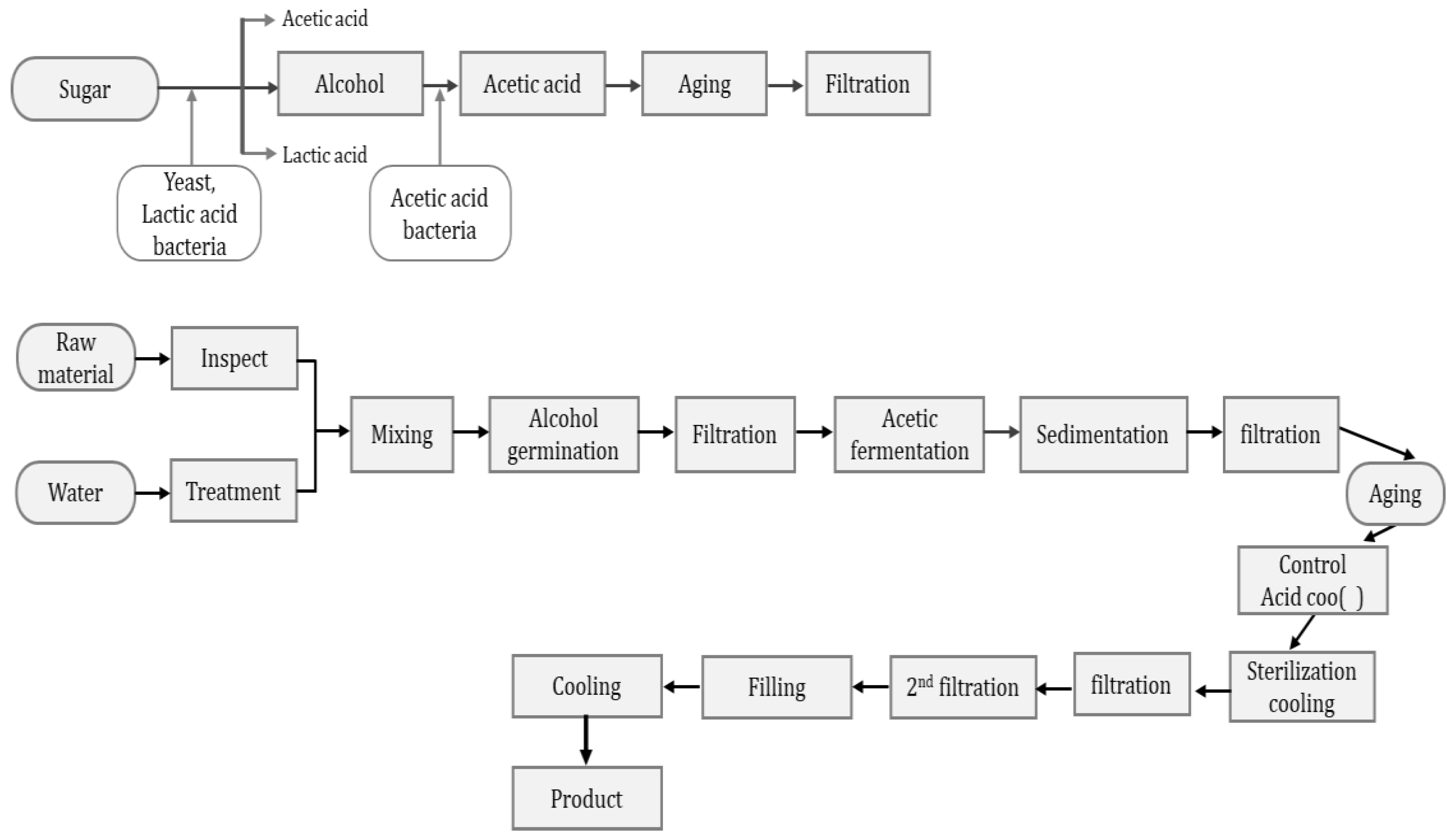
Figure 12. General preparation process for vinegar.
2.4.4. Acetic Acid Bacteria
The bacteria involved in producing acetic acid through oxidizing ethanol are generally referred to as acetic acid bacteria. These bacteria are Gram-negative and aerobic, belonging to the genus of A. cetobacter. Some important bacteria in this family include A. aceti, A. acetosum, A. mesoxydans, A. rancens, A. viniacetati, A. orleans, alcohol vinegar includes A. aceti, and A. acetigenum. These bacteria are available for purchase as pure bacteria. However, these bacteria can be isolated during traditional preparations and utilized in subsequent preparations or stored as stock culture. Additionally, bacterial species, such as A. oxydans and A. suboxydans, are unsuitable for the production of vinegar as they tend to produce fibrous mucous membranes during fermentation. During mass production, the choice of strains greatly affects the production yield and quality.
2.4.5. Vinegar Fermentation and Ripening Methods [38]
There are various types of fermentation methods used for the preparation of vinegar. Surface fermentation, agitated fermentation (air injection into a tank), and submerged fermentation methods are popular vinegar fermentation methods. The static method is simple and can be used to create vinegar at home. However, it is challenging to regulate temperature, humidity, and aeration, which might influence the vinegar’s quality. Thus, it is not suitable for mass production, but could be used to produce unique vinegar with a distinct flavor. Despite several limitations, Koreans showed wisdom in managing fermentation conditions. In the West, vinegar is fermented using Orleans or French processes, where the static surface fermentation method is adopted. The liquid fermented as vinegar usually undergoes a ripening process for a considerable period of time due to the degradation of taste because of its unique, pungent smell of acetic acid. It usually takes two to three months, and it is purified by the reaction of the contents of the acetic acid and fermentation liquid produced at this time to produce aromatic substances, such as ethyl acetate. Additionally, the precipitation of undissolved proteins, pectin, and starch clears the liquid.
2.4.6. Ingredients of Fermented Vinegar
Vinegar is a combination of acetic acid and water. However, other organic acids, such as fumaric, lactic, α-ketoglutaric, succinic, malic, and gluconic acids are used for the preparation of vinegar. Additionally, several aromatic components are used along with the acids.
References
- Anal, A.K. Quality ingredients and safety concerns for traditional fermented foods and beverages from Asia: A review. Fermentation 2019, 5, 8.
- Harari, Y.-N. Sapiens, Science Revolution in Sapiens; Kimyoungsa Press: Seoul, Republic of Korea, 2015; pp. 350–355.
- Negrete-Romero, B.; Valencia-Olivares, C.; Baños-Dossetti, G.A.; Pérez-Armendáriz, B.; Cardoso-Ugarte, G.A. Nutritional Contributions and Health Associations of Traditional Fermented Foods. Fermentation 2021, 7, 289.
- Tamang, J.P.; Kailasapathy, K. Fermented Foods and Beverages of the World; CRC Press: Boca Raton, FL, USA, 2010.
- Baruah, R.; Ray, M.; Halami, P.M. Preventive and therapeutic aspects of fermented foods. J. Appl. Microbiol. 2022, 132, 3476–3489.
- Behera, S.S.; El Sheikha, A.F.; Hammami, R.; Kumar, A. Traditionally fermented pickles: How the microbial diversity associated with their nutritional and health benefits? J. Funct. Foods 2020, 70, 103971.
- Schopf, J.W.; Packer, B.M. Early Archean (3.3-billion to 3.5-billion-year-old) microfossils from Warrawoona Group, Australia. Science 1987, 237, 70–73.
- Shin, D.H. Health 100, in Answer Is Fermented; Jayu Acamemy Press: Seoul, Republic of Korea, 2019; pp. 30–31.
- Lee, C.H. A History of Korean Food; Sikanyun Press: Seoul, Republic of Korea, 2021; Volume 68–69, pp. 229–257.
- Choi, H.S. Kimchi Fermentation and It’s Science; Hyoil Press: Seoul, Republic of Korea, 2004; pp. 15–192.
- Song, Y.O. The functional properties of kimchi for the health benefits. Food Ind. Nutr. 2004, 9, 27–33.
- Kwon, D.Y.; Jung, K.R.; Yang, H.J. Truth of Gochu (Red Pepper) Dissemination; Jayu Academy Press: Seoul, Republic of Korea, 2017; pp. 59–88.
- Yang, H.J.; Chung, K.R.; Kwon, D.Y. DNA sequence analysis tells the truth of the origin, propagation, and evolution of chili. J. Ethn. Foods 2017, 4, 154–162.
- Patra, J.K.; Das, G.; Paramithiotis, S.; Shin, H.S. Kimchi and Other Widely Consumed Traditional Fermented Foods of Korea: A Review. Front. Microbiol. 2016, 7, 1493.
- Lee, C.H.; An, B.W. History of Kimchi Processing, Reference review of Kimchi. J. Korean Soc. Food Cult. 1995, 10, 131–139.
- Lee, C.H. Korean Food and Ways. The Root of Health Functional Food; Springer: Singapore, 2022; pp. 139–181.
- Lee, S. Cultural Aspects of Korean Fermented Marine Products in East Asia; Fish Fermentation Technology UN University: Seoul, Republic of Korea, 1993; pp. 39–43.
- Shin, D.H. History of Jang and its origin. In Overview of Korean Jang (Fermented Soybean Products) Manufacturing; Korean Jang Association: Seoul, Republic of Korea, 2022; pp. 12–32.
- Jung, D.Y. Traditional Jang manufacturing method. In Overview of Korean Jang (Fermented Soybean Product) Manufacturing; Korea Jang Association: Seoul, Republic of Korea, 2022; pp. 202–245.
- Choi, Y.H. Modified Jang manufacturing method. In Overview of Korean Jang (Fermented Soybean Product) Manufacturing; Korean Jang Association: Seoul, Republic of Korea, 2022; pp. 246–270.
- Jung, E.J. Modified Doonjang preparation. In Overview of Korean Jang (Fermented Soybean Product) Manufacturing; Korean Jang Association: Seoul, Republic of Korea, 2022; pp. 284–293.
- Kim, J.S.; Yoon, S. Isoflavone Contents and beta}-Glucosidase Activities of Soybeans, Meju, and Doenjang. Korean J. Food Sci. Technol. 1999, 31, 1405–1409.
- Shin, D.H. Utilization of soybean as food stuffs in Korea. In Soybean and Nutrition; IntechOpen: London, UK, 2011; pp. 81–110.
- Tamang, J.P.; Das, S.; Kharnaior, P.; Pariyar, P.; Thapa, N.; Jo, S.-W.; Yim, E.-J.; Shin, D.-H. Shotgun metagenomics of Cheonggukjang, a fermented soybean food of Korea: Community structure, predictive functionalities and amino acids profile. Food Res. Int. 2022, 151, 110904.
- Cho, S.H. Processed food using Jang. In View of Korean Jang (Fermented Soybean Product) Manufacturing; Korean Jang Association: Seoul, Republic of Korea, 2022; pp. 312–322.
- Lee, S.W. Cultural Aspects of Korean Fermented Marine Products in East Asia in Fish Fermentation Technology; United Nation University Press: Tokyo, Japan, 1993; pp. 33–43.
- Kim, Y.M.; Kim, D.S. Korean Jeotgal-Material and Products. Food Research Institute Report, 4th ed.; Korea Food Research Institute: Seongnam, Republic of Korea, 1990; pp. 9–18.
- Kim, S.M. Fermented marine products. In Korean Fermented Food; Sikanyun Press: Seoul, Republic of Korea, 2021; pp. 269–309.
- Koo, O.K.; Lee, S.J.; Chung, K.R.; Jang, D.J.; Yang, H.J.; Kwon, D.Y. Fermented marine products. J. Ethn. Foods 2016, 3, 107–116.
- Kim, Y.M. Jeotgal Part. Fermentation Technology and Industry Development and Future Direction; Report 8; Korea Academy of Science and Technology (KAST): Seongnam, Republic of Korea, 2014; pp. 107–159.
- Mizutani, T.; Kimizuka, A.; Ruddle, K.; Ishige, N. Chemical components of fermented fish products. J. Food Compos. Anal. 1992, 5, 152–159.
- Johnson, C.S.; Gaas, C.A. Vinegar; Medical use and ant glycemic effect. Medscape Gen. Med. 2006, 8, 61.
- Park, E.-H.; Choi, C.-Y.; Kwon, H.-J.; Kim, M.-D. Literature review on type and manufacturing methods of Korean traditional vinegar. Food Sci. Ind. 2016, 49, 94–99.
- Bourgeois, J.F.; Barja, F. The history of vinegar. Arch. Des Sci. 2009, 62, 147–160.
- Korea Agro-Fisheries & Food Trade Corporation. Report. a: Vinegar Market In Processed Food Market; Korea Agro-Fisheries & Food Trade Corporation: Seoul, Republic of Korea, 2017; pp. 13–48.
- Jin, J.H. Vinegar Part. Fermentation Technology and Industry Development and Future Direction; Report 8; Korea Academy of Science and Technology (KAST): Daejeon, Republic of Korea, 2014; pp. 160–192.
- Seo, K.I.; Won, Y.S. Present Status of Vinegar Fermentation Industry and Development in Korean Fermented Food; Sikanyou Press: Seoul, Republic of Korea, 2021; pp. 313–354.
- Shin, S.K.; Son, H.S.; Shin, C.H.; Yoon, W.H.; Hwang, J.H.; Bang, B.H. Fermentation Science; Jinro Press: Seoul, Republic of Korea, 2012; pp. 137–147.
More
Information
Subjects:
Food Science & Technology; Nutrition & Dietetics
Contributors
MDPI registered users' name will be linked to their SciProfiles pages. To register with us, please refer to https://encyclopedia.pub/register
:
View Times:
8.1K
Revisions:
2 times
(View History)
Update Date:
09 Dec 2022
Notice
You are not a member of the advisory board for this topic. If you want to update advisory board member profile, please contact office@encyclopedia.pub.
OK
Confirm
Only members of the Encyclopedia advisory board for this topic are allowed to note entries. Would you like to become an advisory board member of the Encyclopedia?
Yes
No
${ textCharacter }/${ maxCharacter }
Submit
Cancel
Back
Comments
${ item }
|
More
No more~
There is no comment~
${ textCharacter }/${ maxCharacter }
Submit
Cancel
${ selectedItem.replyTextCharacter }/${ selectedItem.replyMaxCharacter }
Submit
Cancel
Confirm
Are you sure to Delete?
Yes
No




